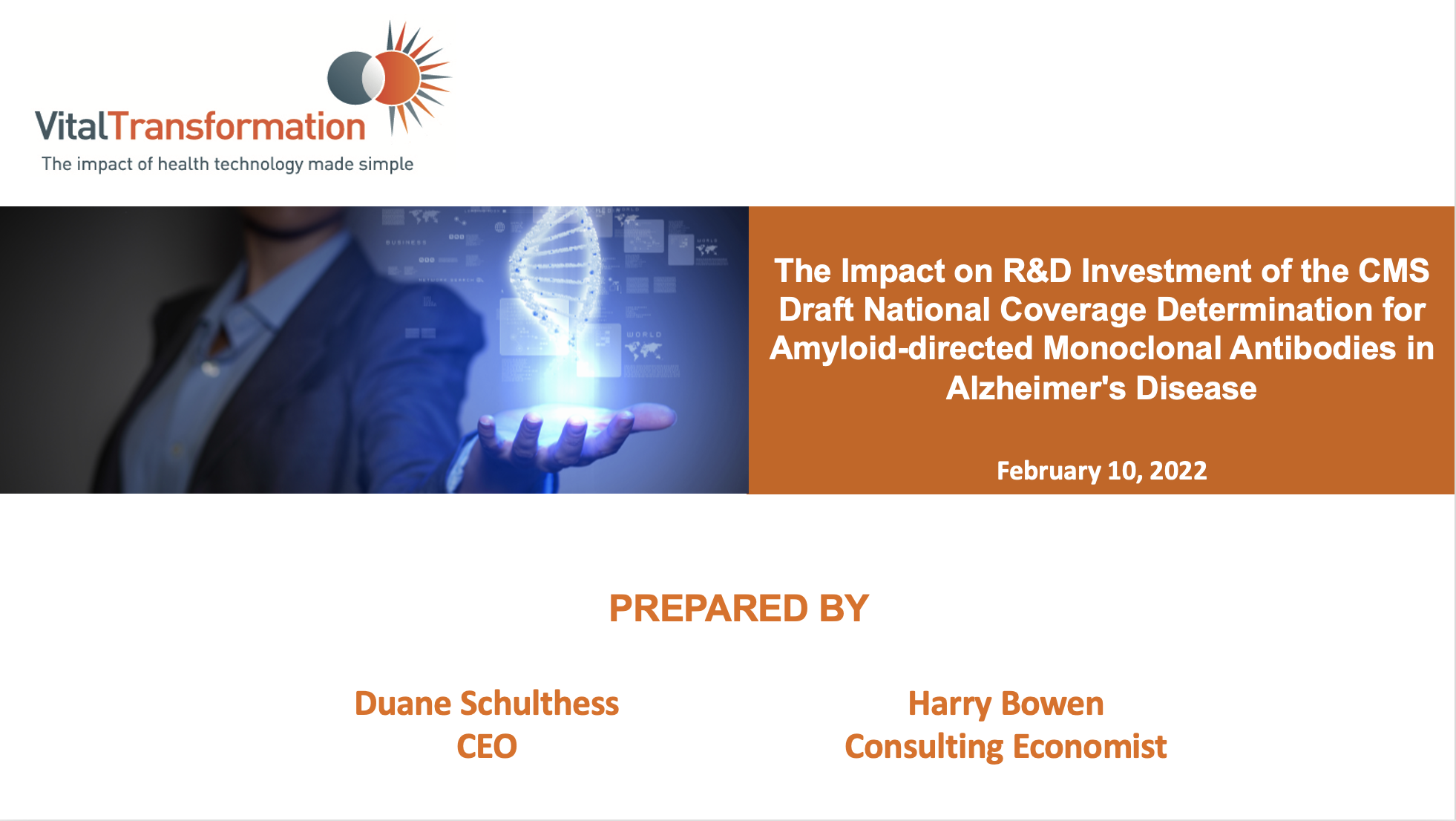The Impact on R&D Investment of the CMS Draft National Coverage Determination for Amyloid-directed Monoclonal Antibodies in Alzheimer’s Disease
The Executive Summary
- The Centers for Medicare and Medicaid Services (CMS) has introduced a draft national coverage determination (NCD) for amyloid-targeting Alzheimer’s disease (AD) therapies which brings new uncertainties into investment decisions / ROI calculations.
- This analysis measures the potential impact of this NCD – using assumptions based on the current draft language and historical data about AD R&D trials and investment, we assume that the NCD will add 3 or more years to the time it takes for an AD asset to see any return on investment.
- Of the programs currently in development – IF the proposed NCD was in place at the time of program initiation, 93% of investments would have had negative ROI and therefore would not have likely been made.
- Furthermore, the results of our research find that many existing clinical development programs would likely be halted – this is not only true for amyloid-targeting therapies, but all AD treatments, as neurological disorders often use the same endpoint threshold when applying for CMS program participation.
- The NCD, if implemented, reduces our estimated 39 treatments with a net positive ROI to 3, with an assumed three-year delay; with a four-year delay, we find only one therapy with a positive ROI in our model.
- Finally, the NCD introduces new and material risks to the ROI calculations for potentially all products approved under the accelerated approval pathway, which is vital to supporting the development of treatments targeting high unmet medical needs and significant scientific challenges.
Press Releases
February 10th, 2022
Key Findings
- 39 of 45 Alzheimer’s Therapies undergoing clinical development in our cohort have a net positive return on investment (ROI) under the current FDA approval pathway.
- By modeling the impact of the proposed CMS guidance (a three year confirmatory trial), the ROI of 42 of 45 assets in our cohort turns negative.
- Investors may react by reducing investments in AD more broadly, and potentially other central nervous system treatments which are already seeing an exodus of clinical development due to their challenges; this is also true for any therapeutic area where the use of an accelerated approval is now called in question.
- Clinical Discovery is taking longer in Alzheimer’s Disease
- Since 2004, the combined time it takes to complete a Phase 1 through Phase 3 clinical trial in Alzheimer’s Disease has increased by 4% per year.
- In 2022, the clinical trials in our data set will take 11.8 years in total.
- Clinical trials for Alzheimer’s Disease will continue to halve in number every 10 years at current trends.
- Projecting a further >80% decline to the current trend of Alzheimer’s Disease clinical trials if the CMS guidance is implemented, essentially brings clinical development to near zero.
- The statistical relationship between an Alzheimer’s Disease’s ROI and the implementation of the proposed guidance by CMS is highly significant; the statistical regression finds less than a 1 in 100,000 chance that the relationship between the CMS guidance and the investment ROI of a therapy is caused by random chance.
Methodology
- Starting from 1993, a cohort of clinical trials for the treatment of Alzheimer’s disease (AD) was extracted – 551 trials in total.
- All early-stage investments, venture funding, grants, IPOs, and deals involving clinical research in AD were obtained by the date secured and then linked to the specific asset/company that entered into AD RCTs for FDA approval – 729 individual financing rounds and 287 deals in total.
- The length of time required, from launch to conclusion, of an AD trial was calculated for the entire historical cohort, and the increase of time, increase of costs, and reductions of revenue caused by the CMS draft decision was incorporated into our assessment.
- The impacts of the CMS draft decision were applied to a revised estimate for investor ROI, taking into consideration several scenarios for reduced revenue and patent life.
Supported by:
This research and analysis was commissioned and funded by Biogen, Inc.




